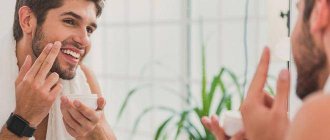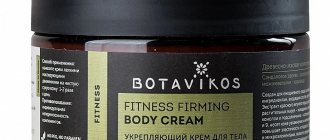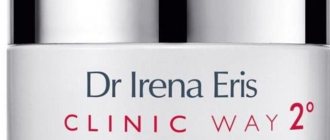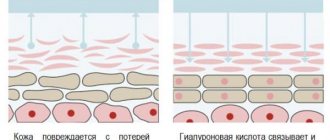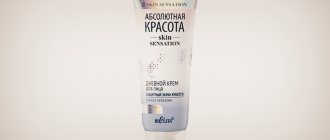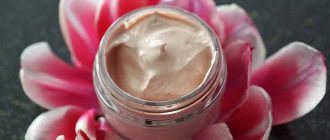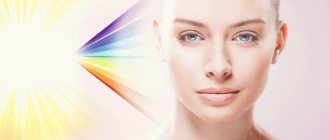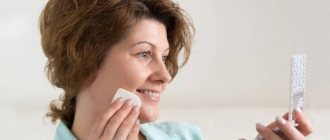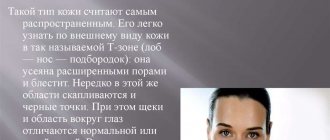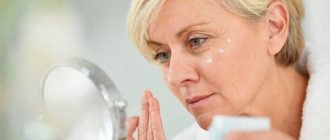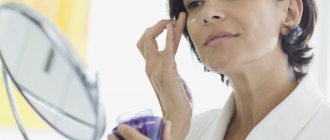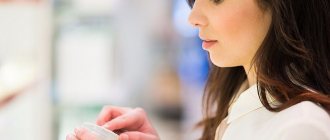Best whitening face cream
Facial skin changes usually occur as a result of hormonal imbalances or excessive exposure to UV rays. In addition, their causes may be various types of inflammation, the use of hormonal pills or other drugs containing photoallergic substances. Very often, changes appear as a result of scratching pimples and squeezing pimples, as well as during pregnancy due to the action of hormones. Whitening cream is designed to lighten stains, so in most cases it contains vitamin C or A, and may also contain vitamin E or fruit acids. The rating has a large selection of these products, which additionally provide sun protection.
The TOP of the best whitening face creams includes:
BERGAMO Moselle Whitening EX Whitening
This whitening product will help get rid of freckles, spots that appear as a result of sunbathing, or with age. The cream contains two special ingredients: hyaluronic acid, which improves skin hydration, strengthens it and protects it from further damage due to the negative effects of sunlight, and arbutin, which reduces the visibility of spots and discoloration, and has an antibacterial effect. Reduces the harmful effects of free radicals and melanin production. It has a light texture and is easily absorbed.
| Characteristic | Meaning |
| Skin type | all types |
| Volume, ml | 50 |
| Manufacturer country | South Korea |
Pros:
- beautiful packaging design;
- evens out facial tone;
- whitens age spots;
- makes the skin soft and pleasant to the touch;
- rejuvenating effect;
- does not cause irritation.
Minuses:
- slightly greasy consistency;
- overpriced.
Review: “I love this cream, its delicate texture is quickly absorbed, the skin becomes pleasantly soft, the freckles have disappeared, but the age spots have lightened a little. I recommend using it as a skincare product under makeup.”
NATURA SIBERICA White SPF 30
Whitening cream is recommended for people suffering from uneven skin coloring, brown spots, and freckles. The main ingredient of the product is a stable form of vitamin C obtained from cloudberry, ginseng and cladonia extracts. The product brightens and evens out skin tone, has a very light and delicate consistency, it can be applied not only to a spot, but to the entire face throughout the day. With regular use of the cream, spots become lighter and less noticeable for at least 4 weeks, and the skin becomes more radiant and smooth.
| Characteristic | Meaning |
| Skin type | all types |
| Volume, ml | 50 |
| Manufacturer country | Russia |
Pros:
- convenient bottle with dispenser;
- light consistency;
- UV protection;
- makes the skin velvety;
- lightens freckles;
- eliminates redness and pimples.
Minuses:
- weak moisturizing effect;
- Lightens slightly.
Review: “I decided to buy this cream after reading positive reviews and must admit that I am pleased with its effect. I use the first tube quite regularly, I apply it to my nose and cheeks, where I have freckles. They did not disappear completely, but became much lighter, and the skin acquired a velvety effect. I’m satisfied and recommend it!”
SECRET KEY Snow White Cream
This is a universal cream that provides brightening and intense hydration. Ideal for tired, gray skin that has lost its radiance. It contains vitamin B3, which is valued for its brightening properties, blocking melanin transport and reducing the appearance of age spots, stimulates collagen production in the skin, has anti-inflammatory properties, soothes erythema and tightens sebaceous glands. Thanks to the presence of milk proteins and betaine, the cream is suitable for nutrition and intensive hydration. It can be used as a treatment, makeup base or deeply moisturizing night cream.
| Characteristic | Meaning |
| Skin type | all types |
| Volume, ml | 50 |
| Manufacturer country | Korea |
Pros:
- The set includes a convenient spatula;
- the packaging is beautifully designed;
- effectively whitens;
- softens the skin;
- nice smell.
Minuses:
- difficult to find on sale;
- mask effect on dark skin.
Review: “After a few days of using the cream, I noticed that my skin became better hydrated. Whitening was indeed noticed, but only on the freckles, they became lighter. The pigment spots have not reacted in any way yet.”
TOP of the best effective and inexpensive means
Today, cosmetology offers a huge selection of different whitening creams. From this quantity, you need to choose a truly effective, high-quality and healthy cream. A good remedy is one that does not harm the skin, but at the same time effectively eliminates not only blemishes, but also freckles, acne, lengthigo, chloasma and pimples. Popular brands: Natura Siberica, Nivea, Avene, Vichy. Below you can see examples of their preparations.
Achromin
Achromin is a good remedy against age spots. Achromin quickly and effectively brightens and protects against strong effects on the skin. Has sunscreen and antioxidant effects. Evens out the tone of the epidermis, softens and restores the surface layer. Significantly reduces the number of blackheads, open comedones, pimples and other rashes. The active ingredient is lactic acid.
Compound
- glycerol;
- thermal water;
- lactic acid;
- vitamins;
- wild rose and tea tree extract;
- lanolin.
Features of application
Apply a few hours before going outside or before bed. For prevention, use once every two weeks.
The cost of Achromin cream starts from 500 rubles. minimum volume – 45 ml.
Suitable for dry and sensitive skin.
Neotone with acids
An excellent cosmetic product against the appearance of pigmentation on the body. It relieves chloasma and lengthigo well, copes with rashes and acne. Removes excess shine and mattifies. The active ingredient is salicylic acid. Creates a protective layer. Has a sun protection effect.
Compound
- thermal water;
- glycogel acid;
- salicylic acid;
- lactic acid;
- liquorice root;
- ascorbic acid;
- glycerol.
Features of application
Apply half an hour before going out. Do not rinse off. Before use, moisturize the skin. Made specifically for oily and combination skin. You can learn more about pharmacy creams for age spots by following the link.
Neoton costs from 1000 rubles for a minimum volume of 45 ml.
May cause an allergic reaction.
Achroactive
Whitening cream for pigmentation, freckles, acne and more. Has an antioxidant and moisturizing effect. Does not leave greasy stains or white marks. The active component is hyaluronic acid. Creates a protective layer that reduces the influence of external environmental factors on the surface of the epidermis. Retains moisture in cells. Find out about the most effective face creams with protection from the sun and age spots here.
Compound
- hyaluronic acid;
- panthenol;
- aloe extract;
- thermal water;
- beta-carotene;
- vitamin C;
- arbunin
Features of application
Especially for dry and dehydrated skin. Quickly absorbed. It is better to use together with moisturizing and healing creams.
Akhroaktiv cream costs from 900 rubles per 30 ml.
Can be used during pregnancy.
Clearvin
A unique anti-pigmentation facial product. Clearvin cream has a sunscreen and moisturizing effect. Lightens spots, scars, scars. Fights acne, comedones, acne. Has anti-inflammatory components. Stimulates the production of moisture in the body. Restores skin, heals microcracks. Protects from environmental influences. The active component is gluconic acid.
Compound
- gluconic acid;
- turmeric;
- aloe vera;
- vaccha;
- sandalwood;
- Lodhra;
- vitamin E;
- beeswax;
- bhasma;
- beta-carotene;
- tocopherol
Features of application
Suitable for all skin types. The course of treatment is two months. Apply twice daily. For prevention, use once a week.
The cost of Klivrin cream starts from 400 rubles. Minimum volume – 45 ml.
Astramin
Whitening cream with antioxidant and sun protection effect. Copes well with the first signs of acne and slows down the production of melanin. Does not leave white spots. Has a light texture. Promotes skin regeneration. Protects against strong exposure to ultraviolet rays. The active ingredient is panthenol. You can learn more about everyday sunscreens here.
Compound
- panthenol;
- glycolic acid;
- hyaluronic acid;
- arbunin;
- tocopherol;
- caffeine;
- glycerol;
Features of application
Suitable for all skin types. Quickly absorbed.
Astramin cream costs from 750 rubles for a minimum volume of 45 ml.
Store in original packaging. Prevent exposure to direct sunlight.
Melantiv
A good effective remedy against age spots. Takes age-related changes into account. Suitable for whitening freckles. Has a lifting effect. Returns elasticity to the skin. Eliminates pigmentation, slows down melanin production. Evens out the tone. Removes excess fat and intensively nourishes. Has a lasting effect. The active component is tocopherol.
Compound
- tocopherol;
- kojic and glycogenic acids;
- stearic acid;
- glycerol;
- beta-carotene;
- vitamin C;
- caffeine.
Features of application
Suitable for combination and sensitive skin. Apply before bed. Do not rinse off.
The cost of “Melanative” cream is from 650 rubles. Minimum volume – 45 ml.
May cause allergic reactions. There are restrictions.
Bark against freckles and age spots
An excellent product that will get rid of not only pigmentation, but also freckles. Quickly and effectively eliminates the problem. Intensely nourishes and moisturizes. Saturates with beneficial vitamins and minerals. Helps the epidermis recover. The active ingredient is vitamin C.
Compound
- vitamin C;
- tocopherol;
- chamomile extract;
- citrus extract;
- glycerol;
- arbunin
Features of application
Can be used as a base for makeup.
“KORA” cream against freckles and age spots costs from 700 rubles for a minimum volume of 30 ml
An allergic reaction to citrus extract is possible.
Brightening Natura Siberica
Revitalizing and brightening cream. Has sunscreen and antioxidant effects. Penetrates deeply into the layers of the epidermis. Improves the condition of damaged cells. Normalizes the functioning of the sebaceous glands. Evens out tone and tightens pores. Promotes rapid restoration of the epidermis, softens and nourishes. The active component is arbunin.
Compound
- arbunin;
- vitamin C;
- glycolic acid;
- glycerol;
- jojoba oil.
Features of application
Suitable for oily and combination skin. You can learn more about Natura Siberica whitening cream in this material.
Lightening cream “Natura Siberica” costs from 800 rubles. Minimum volume – 45 ml.
Fly agaric whitening cream
An excellent inexpensive remedy against unwanted pigmentation. Prevents the appearance of further spots, removes freckles, dries out acne. Mattifies, moisturizes, nourishes. Has a restorative calming effect. Treats damaged upper layer of the epidermis. The active ingredient is panthenol.
Compound
- almond oil;
- panthenol;
- lemon acid;
- vitamins: A, E;
- rosemary;
- lavender;
Features of application
After use, it is advisable to use a moisturizer or sunscreen. You can find out what other most effective anti-pigmentation creams are in the article.
The cost of the whitening cream “Mukhomor” is from 500 rubles per 50 ml.
Nivea Whitening Cream
Vitamin-based regenerating cream. Promotes rapid regeneration of damaged cells, microcracks and the upper layer of the epidermis. Intensively cares for the skin. Nourishes, moisturizes, relieves inflammation, whitens pigmentation, dries out pimples and acne. The active ingredient is vitamins.
Compound
- vitamins: A, B, C, E;
- fruit acids;
- glycerol;
- thermal water.
Features of application
Suitable for sensitive, dry and problematic facial skin.
Nivea whitening cream costs from 300 rubles. Minimum volume – 50 ml.
Cream for pigment spots “Avene D-Pigment Leger”
Effective cosmetics against the appearance of new age spots on the face and body. Gives a healthy glow to the skin, lightens pigmentation and freckles, saturates cells with essential vitamins, trace elements and minerals. Restores damaged cells. The active ingredient is lactic acid.
Compound
- lactic acid;
- glycerol;
- parsley and licorice root extract;
- lemon juice.
Features of application
Contraindicated for dry skin. After use, be sure to moisturize the skin.
Avene D-Pigment Leger cream for pigment spots costs from 1000 rubles for a minimum volume of 50 ml.
Shelf life depends on storage conditions.
Elure
A good remedy for combating pigmentation. It has a light texture and is quickly absorbed. Soothes and moisturizes the skin. Quickly and permanently whitens age spots caused by the sun or age-related changes. Does not cause allergies or irritation. The active ingredient is rucinol.
Features of application
- rucinol;
- glycerol;
- beta-carotene;
- lemon acid;
- vitamin C;
- thermal water.
Features of application
Apply like a regular cream.
The cost of Elure cream is from 2000 rubles. Minimum volume – 50 ml.
Lakshma MAXXI
A good whitening agent against age spots. Effective, fast, has a lasting effect. The result is noticeable after the first month of use. Penetrates deeply into the layers of the epidermis. Moisturizes, nourishes, has a calming effect. Relieves inflammation, tightens pores. The active ingredient is caffeine.
Compound
- caffeine;
- glycohelic acid;
- lactic acid;
- hydrochion (2%);
- glycerol;
- thermal water.
Features of application
Before use, apply a moisturizing toner.
Cream “Lakshma MAXXI” costs from 800 rubles for a minimum volume of 50 ml.
Contains hydrochion. Do not use on sensitive, dry or problematic skin.
Vichy Idealia PRO
A popular and effective cosmetic product from a series of whitening products. The active ingredient is thermal water from the spring of the same name. Gently and carefully cares for the condition of the epidermis. Quickly removes spots and freckles. Fights acne. Cost from 2000 rubles. Minimum volume – 45 ml.
Compound
- thermal water;
- rucinol;
- glycolic acid;
- lemon juice;
- glycerol;
- chamomile, calendula, mint extract.
Features of application
Especially for dry, sensitive and problematic skin. Apply several times a day.
Rating of whitening body creams
In the fight against skin pigmentation, the use of anti-discoloration cosmetics along with chemical peels gives good results. This increases the effectiveness of depigmentation. Thanks to exfoliation, melanin in the outer layers of the epidermis is eliminated and the action and penetration of active ingredients is facilitated.
The best whitening creams for the body:
Eveline Cosmetics Extra Soft Whitening
A budget offer that almost everyone can afford. This product, packaged in a convenient jar, is a daily cream for people with any skin type. It contains cucumber extract, avocado oil, D-panthenol and allantoin. The active components are designed for maximum hydration, lightening of skin areas, and have a calming and anti-inflammatory effect. The cosmetic product can be applied to almost the entire body, protecting the skin of the face, neck, décolleté and hands from sun rays.
| Characteristic | Meaning |
| Skin type | all types |
| Volume, ml | 200 |
| Manufacturer country | Poland |
Pros:
- affordable price;
- not too greasy;
- light texture;
- economical consumption;
- very pleasant smell;
- moisturizes well.
Minuses:
- weakly whitens pigmentation;
- may cause allergies.
Review: “I really like this product because it is used on the face and body. Moisturizes the skin for 24 hours, also removes blemishes and brightens the skin, I recommend it!”
Natura Siberica daytime Lingonberry
The active ingredients of this cream include Amur lingonberry, yarrow, Japanese sophora. The product stimulates metabolism, cell renewal, restores and protects the skin, maintains its elasticity. It is recommended to use to prevent the appearance of pigmentation and uneven breakdown of melanin. The cream has an airy texture with a berry aroma. It is easy to apply, absorbs quickly enough, and does not leave any stickiness or discomfort on the skin. Does not contain synthetic substances, mineral oils, parabens.
| Characteristic | Meaning |
| Skin type | all types |
| Volume, ml | 200 |
| Manufacturer country | Russia |
Pros:
- berry aroma;
- absorbs quickly;
- convenient tube;
- evens out skin tone;
- healing effect;
- eliminates redness and pimples.
Minuses:
- slightly lightens pigmentation;
- the smell is pungent.
Review: “You can say that I am a fan of this company. All products are made at the highest level. The whitening body cream helped me lighten the red spots on my skin and get rid of small pimples. The volume is large, the consumption is economical, the smell is pleasant. For greater effect, I use both night and day cream.”
List of drugs
When choosing drugs for fungus, it is necessary to focus on effectiveness, the presence of side effects, symptoms and course of the disease. It is important to take into account individual intolerance to the components.
Antifungal antibiotics
If the fungal infection is systemic in nature, an integrated approach is required. Deep tissue damage, separation of the nail plates and severe itching of the skin against the background of deteriorating general health suggest the use of not only local remedies, but also tablets.
Among external remedies, it is worth highlighting medications that contain naftifine. This component has an antibacterial and anti-inflammatory effect. When taken regularly and in combination with other therapeutic agents, recovery occurs quickly.
Preparations with naftifine:
| Exostat solution 1% 15ml |
| Mycoderil cream 1% 15g |
| Exoderil cream 1% 15g |
External preparations for dermatomycosis and keratomycosis
Yeast, mold and dimorphic fungi can be cured with Terbinafine-based products. Popular drugs with this active ingredient:
| Lamicide drops for nails 15ml |
| Lamicide spray for legs 15ml |
| Lamisil cream 1% 15g |
| Fungoterbin 1% 15g |
| Exifin gel 1% 15g |
| Terbizil cream 15g |
| Terbix cream 1% 10g |
| Exiter cream 1% 15g |
Medicines containing ketoconazole effectively fight fungal infections of the head and groin area. List of drugs:
| Shampoo Sulsen forte 250ml ketoconazole |
| Shampoo Sulsen mite for dandruff 1% 250ml |
| Sulsen forte paste 2% 75g ketoconazole |
| Sulsen mite paste 1% 75g |
| Shampoo Sulsen mite for dandruff 1% 150ml |
| Shampoo Sulsen forte from perch 150ml |
| Nizoral cream 2% 15g |
| Mycozoral ointment 2% 15g |
| Sebozol shampoo 100ml |
Products based on miconazole, a synthetic substance with an antifungal effect, are effective against dermatomycetes and yeast, as well as the causative agent of lichen versicolor. Preparations containing miconazole:
| Mykozon cream 2% 15g |
| Ginocaps vag caps x 10 |
Antifungal agents for systemic candidiasis
The Candida fungus spreads inside the body: on the respiratory system, in the digestive system, on the genitals. Sometimes it infects the nervous and cardiovascular systems.
Often, with systemic candidiasis, the fungus also affects external tissues - nail plates, skin on the legs and arms. To get rid of the disease, it is important to start therapy in a timely manner. To treat candidiasis, drugs containing clotrimazole are used.
Popular remedies for the treatment of mycotic diseases caused by the Candida fungus:
| Flucorem 0.5% gel 15g |
| Kanizon plus cream 15g |
| Kanizon cream 1% 20g |
| Candide cream 15g |
| Clotrimazole-Akrikhin ointment 1% 20g |
| Clotrimazole-Akos ointment 1% 20g |
| Candide B cream 15g |
| Candiderm cream 15g |
The best whitening creams for freckles and age spots
Pigment spots most often appear on the skin as we age. In medicine, this color change is called a lentil spot. They can be lighter (light brown) or darker (even almost black). Mostly they appear in places most often exposed to sunlight, that is, on the face or hands. You can lighten age spots in different ways. A popular way to remove them is laser therapy or chemical peeling. However, before you decide on such a procedure, you can try to lighten age spots with cosmetics.
The rating of the best creams for age spots and freckles includes:
Before and After From Age Spots
The cream not only lightens age spots on the skin, but also protects very well from solar radiation. Thanks to this, it also prevents the formation of new stains. The cream contains red aquatic plant extract, shea butter, avocado and vitamins C, E. They prevent local accumulation of pigment, and also slow down and regulate melanin synthesis, which gives the effect of depigmentation and lightening, and protects against the formation of new changes. For the product to work, you need to apply it 2 times a day. It has a neutral smell and is non-greasy. Can be used both on the face and other parts of the body.
| Characteristic | Meaning |
| Skin type | all types |
| Volume, ml | 50 |
| Manufacturer country | Russia |
Pros:
- affordable price;
- convenient packaging;
- light texture;
- does not leave stickiness;
- lightens pigmentation.
Minuses:
- long wait for results;
- slightly greasy consistency.
Review: “I never thought that it was possible to achieve whitening of age spots with a product for such a budget price. I used it, as stated in the instructions, 2 times a day. The effect is indeed observed, but not immediately. The skin became fresher and brighter, and freckles were less noticeable. I recommend!".
Kora Phytocosmetics
A unique special cream that effectively treats age spots on the back, arms, shoulders, décolleté and face, and also prevents the appearance of new ones. Helps achieve the effect of fresh and smooth skin. Evens out skin tone and has a rejuvenating effect. The rich formula of the whitening product, thanks to specially selected active ingredients, provides exceptional effectiveness in the fight against hyperpigmentation. It includes vitamin C, licorice, lemon, horse sorrel and bergenia extract. Stimulates the restoration of skin cells damaged by excessive exposure to UV radiation.
| Characteristic | Meaning |
| Skin type | all types |
| Volume, ml | 50 |
| Manufacturer country | Russia |
Pros:
- optimal volume;
- light consistency;
- UV protection;
- rejuvenates the skin;
- evens out facial tone;
- predominantly natural composition.
Minuses:
- relatively high cost;
- weakly whitens.
Review: “The cream has a light but rich texture and white color. Compared to other filters, it does not leave any stickiness on the skin. Whitening goes away after a few weeks of regular use. Freckles have become less pronounced, and the skin color has become fresher. I recommend".
Vitex Ideal Whitening
Another product designed for skin care is a mask that gently whitens, evens out color, moisturizes and restores damaged epidermis. The active components in the composition exfoliate dead cells and lighten depigmentation on the skin, stimulate the process of melanogenesis, preventing excessive pigmentation. The mask effectively increases flexibility and fights free radicals. Regular use of the cream gradually lightens skin defects. The product has a light texture and is an excellent base for makeup.
| Characteristic | Meaning |
| Skin type | all types |
| Volume, ml | 100 |
| Manufacturer country | Belarus |
Pros:
- affordable cost of the product;
- large volume;
- brightens with regular use;
- nice smell;
- nourishes the skin.
Minuses:
- fatty;
- leaves a sticky film on the face.
Review: “After prolonged use, it whitens the skin. The cream leaves a delicate, slightly oily layer on the skin, which is also a very good base for makeup. It also perfectly protects the skin from solar radiation in hot summers.”
Treatments for hyperpigmentation
You can get rid of pigmentation on the face using the following procedures:
Whitening cream
. Before using this product, you must visit a dermatologist. Some whitening ointments contain allergic or toxic substances. Pregnant and lactating women, as well as those with liver and kidney diseases, should not use whitening creams. It is most reliable to use ointments that contain:
- hydrogel;
- salicylic alcohol;
- lactic acid.
Cleansing ointments have a limited shelf life, so the ointment should be used immediately after purchase. The compositional features are lost after 7 days.
Cryodestruction procedure.
This is the most popular and inexpensive method of combating age spots. Liquid nitrogen is used to treat stains. The skin takes on a white, cold tint and becomes insensitive. The procedure lasts only 7 minutes. A crust forms on the skin, which subsequently falls off. Renewed skin has a vibrant and rosy appearance. You can completely get rid of pigmentation in 3 procedures.
Cleaning with a radio knife
. In this case, radio waves and current are used. The patient is given local anesthesia. After cleaning is completed, a crust will form on the skin, which will fall off within 7 days. In advanced cases, you need to resort to more powerful influences.
Ultrasonic cleaning
. Eight sessions are enough to completely remove pigmentation. The likelihood of new spots appearing is low. The procedure does not cause any discomfort. During the session, many people fall asleep in the chair. Ultrasonic cleaning should not be used by pregnant women, patients with hypertension, those with skin irritations, or wearing a pacemaker. It should be taken into account that ultrasonic waves are designed to clean shallow pigmentation.
Dry cleaning
. The facial skin is treated with a light acid solution. As a result, the top layer of the skin is removed along with age spots. The specialist selects the drug and its concentration based on the number of spots.
The most popular is superficial skin cleansing using fruit and glycolic acid. Cleaning is performed in 4-10 procedures. The break between visits to the salon can be about 14 days.
Medium cleaning is performed using trichloroacetic acid. It is necessary to carry out 3 procedures with a break of 2 months. This cleaning is practically painless. Redness on the skin disappears within a day.
Diamond resurfacing (microdermabrasion).
The cosmetologist uses a device with a diamond attachment. A special tip delivers microcrystals to pigment spots. This procedure is not as painful as dry cleaning. The effect is carried out only on the upper and middle layers of the skin. When performing the procedure, you can feel a light touch of a rough object.
Fractional laser treatment
. This method is used to eliminate complex age spots. The skin is cauterized with a special laser. During the procedure, a slight tingling sensation is felt. Anesthesia is not necessary. The main advantage of the procedure is the immediate effect. Laser beams do not damage the skin, so healing occurs within 3-4 days.
Rating of Korean whitening creams
The Korean approach to skin care involves using cosmetics rich in active ingredients. Their composition is very often complex; it can be based on: snail mucus, vitamins, fruit acids, stem cells and bee venom. Among them there are often natural creams necessary for everyday care, depending on skin type, needs and age.
The best Korean whitening creams:
FARMSTAY Green Tea Seed Whitening Water Cream
The sunscreen from the Korean brand contains green tea seeds. It has an airy consistency and an invigorating scent, is quickly absorbed, nourishes the skin with moisture and protects from damage. Green tea seed extract protects cells from oxidation and minimizes the negative effects of UV radiation. It eliminates irritated and inflamed areas of the skin, normalizes metabolic processes, evens out facial tone and eliminates redness. Hyaluronic acid in the composition has a lifting effect and increases skin elasticity.
| Characteristic | Meaning |
| Skin type | all types, oily, combination |
| Volume, ml | 100 |
| Manufacturer country | Korea |
Pros:
- effectively lightens pigmentation;
- suitable for all skin types;
- convenient packaging;
- gives the skin freshness;
- moisturizes as much as possible.
Minuses:
- high price;
- difficult to find on sale.
Review: “Very pleased, after one package the spots stopped attracting attention, I was able to give up makeup. The brightening face cream actually works as advised - whitens spots by about 60-80%.”
TONY MOLY Panda's Dream White Magic Cream
Korean whitening cream for age spots is made based on extracts of bamboo, lavender, jasmine, apple, raspberry, blackberry, blueberry, rose, marjoram and thyme. The balanced composition of active ingredients is a source of powerful antioxidants, amino acids, chlorophoryls and vitamin C, which stimulate collagen production. It strengthens blood vessels, improves skin elasticity and blood circulation. Vitamin B3 brightens and controls melanin production. This helps improve the overall tone and texture of the skin. The product is packaged in an adorable panda-shaped package.
| Characteristic | Meaning |
| Skin type | all types |
| Volume, ml | 50 |
| Manufacturer country | Korea |
Pros:
- beautiful packaging design;
- nourishes the skin as deeply as possible;
- predominantly natural composition;
- nice smell;
- brightens the skin.
Minuses:
- high price;
- difficult to find on sale.
Review: “I bought the cream quite by accident, seduced by the beautiful packaging. But my surprise was huge when I started using this amazing cosmetic product! The night cream works best for me. After a week of use, the skin is moisturized and looks fresh. Also helps combat skin problems and lighten discoloration.”
Skin lightening and whitening products
First, we will look at drugs used in medicine to treat skin hyperpigmentation, which are also used for whitening.
Hydroquinone is one of the most commonly used drugs to treat skin hyperpigmentation. In the United States, hydroquinone is available as over-the-counter whitening creams at 2% strength and as prescription medications containing 1.5–4%. This is a small hydrophilic molecule that effectively penetrates human skin, with up to 43% of the injected substance reaching the circulatory system. Hydroquinone acts by inhibiting the enzymatic oxidation of tyrosine to 3,4-dihydroxyphenylalanine (DOPA). Hydroquinone acts as an effective inhibitor of melanogenesis in vitro and in vivo, suppressing DNA and RNA synthesis, as well as reducing tyrosinase activity mainly in melanocytes, that is, it exhibits cytotoxicity. The drug is a strong reducing agent that is quickly converted to hydroquinone and p
-benzoquinone, both of which are toxic to melanocytes.
The first clinical study demonstrating the effectiveness of hydroquinone in skin lightening was published in 1961, and subsequent studies have only confirmed this conclusion. Hydroquinone can also be used in combination with other compounds to customize its action. Concomitant use of hydroquinone with azelaic acid enhances skin absorption and increases dermal delivery of both compounds. The combined preparation of hydroquinone and salicylic acid is better retained in the skin. The use of hydroquinone with tranexamic acid results in increased skin deposition of both drugs, resulting in improved targeting by reducing transdermal penetration. Compounds structurally related to hydroquinone include arbutin (hydroquinone β-D-glucopyranoside) and mequinol (hydroquinone monomethyl ester), which inhibit tyrosinase by mechanisms similar to hydroquinone. These products are also commonly found in over-the-counter skin lightening products in the United States and other countries.
Simple and allergic contact dermatitis followed by post-inflammatory dyspigmentation are among the potential side effects that occur when using hydroquinone during skin whitening. Nail pigmentation and peripheral neuropathy have also been reported as complications of hydroquinone. There is a known case of the development of chronic symmetric sensorimotor polyneuropathy and autonomic neuropathy, relief of which occurred only 4 months after stopping the use of hydroquinone-based skin whitening products. Exogenous ochronosis with progressive asymptomatic hyperpigmentation and papules on skin exposed to sunlight is another side effect of hydroquinone. Histology of affected skin demonstrates degeneration of collagen and elastic fibers and deposition of ocher fibers in the dermis. At least 789 cases of exogenous ochronosis have been described in the scientific literature, 756 of which occurred in Africa. However, caution should be exercised in interpreting these data due to the presence of additional factors that may explain the higher rate of exogenous ochronosis in Africa: use of antimalarial drugs, lack of lesion biopsy data, insufficient use of sunscreens during skin bleaching, high concentrations of hydroquinone drugs and products containing resorcinol and other agents. In the United States, where hydroquinone preparations have long been popular, the rate of reported cases of exogenous ochronosis is comparatively low. Another important theoretical side effect of skin whitening with hydroquinone drugs is the development of malignant neoplasms of the skin and internal organs. Hydroquinone is a metabolite of benzene, a leucogenic agent, and is also associated with the development of mononuclear cell leukemia in rats exposed to oral hydroquinone for two years.
Since the practice of skin bleaching involves the application of high concentrations of hydroquinone to large areas of the body, it can be argued that this creates an increased risk of developing malignancies. There are at least two known confirmations of the appearance of malignant tumors due to skin whitening with hydroquinone agents. It is assumed that the reason lies in the pro-carcinogenic effect of hydroquinone or in the suppression of the natural photoprotective effect of melanin.
In the European Union, hydroquinone is classified as a carcinogen and a mutagen.
Azelaic (nonandioic) acid is a saturated dicarboxylic acid that has skin-lightening properties. Interestingly, dicarboxylic acids are produced in cultures of the yeast Pityrosporum and are thought to be the cause of the hypopigmentation seen in tinea versicolor. Although dicarboxylic acids, including azelaic acid, inhibit tyrosinase, their affinity is low and cytotoxic doses are required to produce inhibition in vivo. Neither in vivo nor in vitro melanocidal or depigmenting effects are known for them. Azelaic acid also has anti-inflammatory activity and is FDA approved for the treatment of acne vulgaris and rosacea. The anti-inflammatory properties of azelaic acid may also play a role in its effectiveness on post-inflammatory hyperpigmentation and melasma. The use of azelaic acid for the treatment of melasma was found to be more effective than 2% hydroquinone and equivalent to prescription 4% hydroquinone. Local side effects include burning, itching, peeling and erythema. Exogenous ochronosis was not observed. Several patients have experienced comedonal formation caused by subsequent use of sunscreen.
α-Viniferine is the active oligostilbene component of the plant Caragana sinica. Topical application of natural α-viniferine reduces melanin production in vivo and in vitro without impairing the viability and proliferation of melanocytes. Treatment of melanoma cell lines and mouse melanocytes with α-viniferine suppressed melanin production without affecting their viability. A small clinical trial of 23 patients with facial melasma and ephelides demonstrated that topical application of C. sinica
for 8 consecutive weeks resulted in a significant decrease in the melanin index and an increase in lightening compared to the control group. All patients completed the study without complaints of itching or other side effects.
Diacetyl caffeic acid cyclohexyl ester (DACE) is a caffeic acid derivative that inhibits melanin production in αMSH-activated murine melanoma cells. The drug prevents skin hyperpigmentation after UV irradiation and also reduces tyrosinase levels in vivo. In addition, DACE inhibited in vitro melanin secretion in α-MSH-stimulated human epidermal melanocytes and melanoma cell lines. However, further studies are needed to assess the safety of the drug.
Tranexamic acid is an antifibrinolytic drug with FDA-approved indications for the treatment of menorrhagia and dental procedures in patients with hemophilia to prevent bleeding and blood loss. In 1979, it was noted that melasma improved in patients taking tranexamic acid. Subsequent studies, including recent retrospective and randomized control trials, have confirmed these findings. Tranexamic acid can be applied topically and administered by intradermal injection, but most studies have used oral delivery. Doses for the treatment of melasma are significantly lower than for hematological indications.
Adverse side effects develop in 7.1% of patients. Most of them are transient, but deep vein thrombosis rarely occurs, requiring immediate cessation of the drug.
Before initiating therapy, careful screening should be performed to exclude individuals with thromboembolism, taking oral contraceptives, a history of stroke, or cardiac disease. Tranexamic acid is thought to act by blocking the conversion of plasminogen to plasmin in keratinocytes; this may lead to a decrease in the amount of free arachidonic acid and a subsequent decrease in prostaglandin production, thereby reducing melanogenesis.
Kojic acid is a complexing agent first discovered in the mold Aspergillus. It works by chelating copper at the active site of tyrosinase, blocking the conversion of tyrosine to melanin. Kojic acid has proven effective in treating melasma. Side effects include redness, burning and peeling, and disappear in the third week after discontinuation of the drug.
Tretinoin, the acid form of vitamin A, and other retinoids have a depigmenting effect by increasing keratinocyte turnover and reducing the transfer of melanosomes to keratinocytes. Retinoids are used alone or in combination with other medications to treat melasma, post-inflammatory hyperpigmentation, and other pigmentation disorders. In addition, tretinoin is FDA approved and is indicated for use in photoaging skin. Its anti-aging effects include normalizing pigmentation in chronically photodamaged skin. The only side effects are occasional flaking, dryness and erythema; they can be relieved by reducing the frequency of tretinoin use or not applying the drug to the area of reaction for several days.
Glutathione is a tripeptide consisting of cysteine, glycine and glutamate residues that exists in two forms: intracellular reduced (GSH) and oxidized (GSSG). The lightening effects of glutathione are thought to be due to its antioxidant properties; the ability to switch the production of eumelanin to pheomelanin, a type of melanin found in people with fair skin; inhibitory effect on tyrosinase due to binding to the copper-containing active site of this enzyme; and interference with the transfer of tyrosinase into premelanosomes. Data supporting the effectiveness of glutathione are limited. One study from Thailand demonstrated skin lightening in 30 people who took 250 mg of glutathione orally twice daily.
The use of parenteral glutathione for skin whitening is becoming increasingly common in the UK. This service is provided by beauty clinics; in some salons, glutathione is administered to persons without medical training. There is no authoritative information on the effectiveness and safety of this practice.
The FDA warns about the dangers of using injectable skin lightening products, including glutathione. The Philippine Dermatological Society issued a similar warning.
Adverse effects reported with intravenous glutathione for skin whitening include neuro-, renal and liver toxicity, transient headaches and adverse skin rashes - Stevens-Johnson syndrome and toxic epidermal necrolysis. Other potential risks associated with injecting include transmission of infectious agents, including HIV, hepatitis C and B. This is especially dangerous when used by untrained people. Given that glutathione plays an important role in the transition from eumelanin to pheomelanin synthesis, there are concerns about the long-term risk of skin cancer.
Topical steroids are anti-inflammatory drugs used to treat many inflammatory skin conditions. They are popular depigmenting agents used for skin bleaching, and the widespread availability of illicit clobetasol-containing products is believed to be responsible for most of the severe side effects associated with skin bleaching in French-speaking countries. The depigmenting effect of steroids occurs through an initial local vasoconstriction that occurs when applied to the skin, which gives the impression of an immediate reduction in skin pigmentation. Ultimately, topical steroids produce discoloration by inhibiting epidermal melanogenesis.
Steroid use for more than three weeks, especially on thin facial skin and folds, is associated with a range of side effects: development of stretch marks, perianal dermatitis, rosacea-like rashes, acne, telangiectasia, poor wound healing, easy bruising and hypertrichosis. Other side effects: ophthalmic problems (cataracts, glaucoma, eye infections and blindness) associated with the use of topical steroids on the face, especially the eyelids, and avascular osteonecrosis. Skin infections, dermatophytosis, erysipeloid, scabies and warts can occur as a complication after improper use of topical steroids. An atypical manifestation or masking of the clinical picture of these skin diseases is often observed. The use of potent topical steroids leads to systemic side effects, including diabetes and hypertension, Cushing's syndrome, immunosuppression, and adrenal insufficiency.
Mercury salts (mercury iodide, 1–3% in skin whitening products; mercury(II) amidochloride, Hg(NH2)Cl, 1–10%) depigment the skin by inhibiting the formation of melanin. This occurs because mercury salts compete with copper in tyrosinase. Historically, chronic mercury poisoning occurred in the context of industrial exposure, such as in the production of felt hats, or during the use of mercury drugs to treat syphilis and impetigo.
Nowadays, skin lightening also leads to mercury poisoning.
Also known as "hatter's disease" and immortalized by Lewis Carroll in Alice in Wonderland, these poisonings are characterized by psychiatric (memory impairment, intellectual decline, inattention and depression) and neurological (irritability, memory loss and neuropathy) problems.
In mercury poisoning, renal function is impaired (minimal changes or membranous glomerulonephritis) and a paradoxical increase in skin pigmentation occurs. The latter occurs either due to an unexplained increase in melanin production or due to direct deposition of microscopic droplets of metallic mercury in the dermis. Mercury salts are absorbed exclusively through the skin, and therefore, perifollicular mercury deposition is observed on biopsy of lesions in mercury-induced hyperpigmentation. The use of mercury skin lightening agents by pregnant or breastfeeding women is associated with adverse effects in newborns, including anemia, kidney failure, and cataracts.
Glycolic acids are α-hydroxy acids obtained from sugar cane. In low concentrations they have a loosening effect on the epidermis, and in high concentrations they provoke epidermolysis. Both of these actions lead to the removal of the superficial layers of the epidermis and, therefore, to a depigmenting effect. Other mechanisms of depigmentation include increased turnover of keratinocytes with decreased loading time into melanosomes. Side effects when using this product: contact dermatitis with a risk of post-inflammatory hyperpigmentation.
Oxidizing agents are present in various commercial whitening products. Potent skin irritants are sodium hypochlorite (NaOCl, the active ingredient in Belizna household bleach), hypochlorous acid (HOCl) and hydrogen peroxide (H2O2). Hypochlorite is also accompanied by its hydrolysis product, sodium hydroxide (NaOH). Use of such formulations may provoke discrete sensory symptoms, especially burning. The reactivity of liquid NaOCl bleach towards the stratum corneum has been proven even at a concentration of 1%. A pure hypochlorite solution corresponding to a concentration of 4% NaOCl severely damages the stratum corneum.
Sodium hypochlorite can cause allergic reactions. There are known cases of hypersensitivity to household bleach. Symptoms included a skin rash that spread from the fingertips to the knuckles on both hands and swelling accompanied by red and black erosions.
NaOCl baths are used to treat moderate to severe atopic dermatitis or eczema. Solutions with a concentration of 0.05–0.06% oxidizing agent are considered safe. Using more NaOCl will cause severe chemical burns, but lower concentrations will not be effective.
Hydrogen peroxide is an unstable oxidizing agent, so it is rarely used in skin whitening products. Concentrated corrosive peroxide can cause local tissue damage. Hydrogen peroxide is also capable of exerting direct cytotoxic effects through lipid peroxidation. When exposed to skin, inflammation, blisters and more serious damage occur. Contact with the 3% solution will cause immediate burning, irritation, watering and blurred vision, but serious damage is unlikely. Contact with more concentrated solutions of hydrogen peroxide (>10%) may result in ulceration or perforation of the cornea.
Peeling is also sometimes used to whiten the skin. Peeling is classified by depth of penetration: superficial, medium and deep. The first reaches the epidermis, the second reaches the papillary dermis, and the third reaches the reticular dermis.
The depth depends on the type and concentration of the substance used, the pH of the solution and the exposure time. Deep peeling should be used very carefully given the high risk of side effects such as pigmentary disorders and scarring. For superficial peels, glycolic acid, salicylic acid, Jessner's solution (lactic, salicylic acid and resorcinol in a 1:1:1 ratio of 7 or 14%) and trichloroacetic acid in a concentration of 10–30% are used; for medium - 35–50% and 88% phenol. For deep peeling, the Baker-Gordon formula is used - a combination of 88% phenol, water, liquid soap and croton oil. Also, peeling compositions often include lactic acid, salicylic acid, tretinoin, Jessner's solution, thioglycolic acid, resorcinol, pyruvic acid, combinations of salicylic and mandelic acids.
Post-peel complications occur more often in patients with a higher skin phototype on the Fitzpatrick scale and during medium and deep peels. Post-inflammatory pigmentation, erythema and edema are more common in patients with ethnically dark skin. This can be avoided with the correct choice of drug and depth and the use of suitable photoprotection. Allergic reactions, formation of hypertrophic scars, keloids and delayed healing occur. Other potential complications include acneiform eruptions, milia, lines, and persistent erythema.
The harmful effects of skin-whitening cosmetics are exacerbated by rising temperatures as a result of climate change. The main function of melanin is to protect the skin from sun damage and photodamage by absorbing ultraviolet radiation.
Thus, with global warming increasing the already excessively high UV index in Africa, Central America and Southeast Asia, the destruction of melanin due to skin whitening increases the likelihood that sun exposure will lead to premature aging, as well as various types of skin cancer.
conclusions
- Skin bleaching is the use of depigmenting agents to lighten normally pigmented skin.
- Skin bleaching is practiced by various communities around the world.
- A wide range of reagents are used for skin whitening, such as hydroquinone and its derivatives, steroids, mercuric salts, kojic acid, α-hydroxy acids, herbal products and oxidizing agents.
There are many known side effects of skin bleaching:
- Long-term exposure to mercury derivatives causes severe kidney, lung and neurological damage, as well as psychological disorders including anxiety, depression and psychosis.
- Hydroquinone provokes contact dermatitis and ochronosis; potential carcinogen.
- Corticosteroids can lead to diabetes and dermatological complications - mycoses, striae, telangiectasia and hypertrichosis.
- Pregnant women who use bleaching products may experience stillbirth, low birth weight, and neonatal infections.
The creation of pigmentation-controlling pharmacological agents for the prevention and treatment of skin lesions is an important goal in medicine and cosmetology. However, not all drugs are equally useful when used cosmetically, and some of them are extremely poisonous and prohibited.
Which whitening cream is best?
When choosing a skin whitening cream, pay attention to the presence and concentration of active ingredients that exfoliate and whiten the skin. These will be:
- Vitamin C is a strong antioxidant that supports the fight against free radicals and thus slows down the aging process. It gently exfoliates and inhibits melanin synthesis, which causes discoloration. Cosmetics with vitamin C are a good addition to acid and retinol treatments. They also enhance the effects of sunscreens, so they are best used during the day.
- Azelaic acid is an ingredient found in many anti-discoloration creams, especially acne products. It inhibits the proliferation of melanocytes, fights bacteria responsible for the development of acne, and normalizes skin peeling processes.
- Retinol - accelerates the process of creating new cells, thereby brightening and smoothing the skin. It is also one of the most effective firming and anti-wrinkle agents in cosmetics. It is indispensable in the fight against photoaging, so it works best with sun protection creams.
- Niacinamide, also known as vitamin B3. It is an extremely versatile beauty ingredient that reduces discoloration, stimulates collagen production in the skin, has anti-inflammatory properties, soothes erythema and tightens sebaceous glands.
These ingredients contained in anti-pigmentation creams have a long-lasting effect - they are very effective, but it takes time to show their full spectrum of action. Use them over several months, in winter, fall and early spring, when the skin is not exposed to high doses of sunlight.
The most effective face whitening cream can be expensive, but you don’t have to overpay, because there are a lot of affordable and good products. Regular use is often more important than price. Every woman needs to regularly apply the product locally or all over the face for at least several weeks.
Composition of anti-pigment face creams
Today, you can see a lot of anti-pigment creams and gels on the shelves and windows of cosmetic stores. All of them have a whitening effect, so to speak, “erasing stains.” To create this result, the lightening cream contains the following elements:
- Kojic acid is a chemical that has a strong whitening effect. Found in some types of cereals and mushrooms. May cause allergic reactions;
- hydrochion is a natural substance that has toxic properties. It is dangerous, but at the same time very effective - it reduces the functioning of cells and slows down the process of staining. There are side effects and restrictions on use;
- gluconic acid – brightens the surface layer of the epidermis and enhances the effect of all other components;
- vitamin C (ascorbic acid) – promotes rapid regeneration of the skin after interaction with the chemical composition of the product. Protects against strong influence on the condition of the epidermis;
- beta-carotene – slows down the production of melanin (the hormone that produces pigmentation);
- extracts of medicinal herbs and plants - soften the skin, promote accelerated recovery;
- grape seed oil and jojoba – easily and gently remove pigmentation marks.
Whitening creams should be used daily. At the first contact with the skin, the components begin to affect the damaged cell structure. Therefore, to achieve the desired result, you need to use the product regularly. The main thing is not to overdo it with the dosage.
